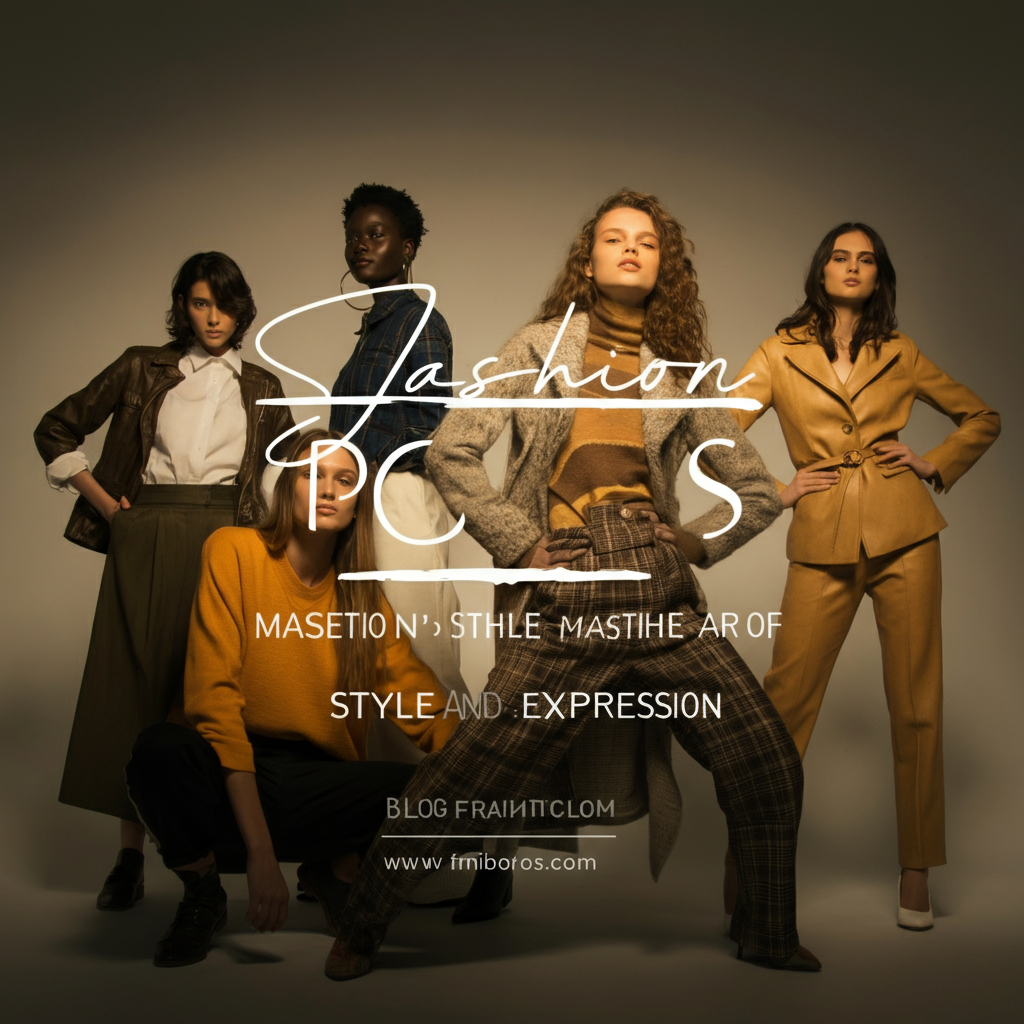
Introduction
More than merely physical positions, fashion poses serve as the basis for eye-catching images in modeling and photography. Learning fashion poses is essential to projecting confidence and creating a narrative through photos, regardless of your level of experience as a model, aspiring influencer, or someone trying to improve your Instagram game.
Everything you need to know about fashion poses will be covered in this comprehensive guide, including what they are, how to master them, and why they are important for branding, trends, and narrative.
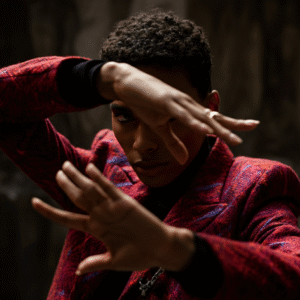
Why Fashion Poses Matter in Photography and Modeling
The silent language of images is fashion postures. In addition to drawing attention, those carefree-looking poses and perspectives arouse feelings and bring out the subject’s individuality. For models, these positions highlight the clothing’s best qualities and appeal to the intended market. The correct positions let photographers realize their imaginative visions.
Fashion poses are quite important for expressing a tale. Whether it’s casual streetwear or dramatic high fashion, a single stance may convey a brand’s essence or tell a story. Posing well can improve a collection or campaign as a whole, not simply a single image.
Key takeaways from this section:
- Fashion poses are integral to storytelling and branding.
- They enhance the appeal of garments by emphasizing their best features.
- Poses communicate confidence, emotion, and style.
Types of Fashion Poses
Any photo shoot can become more lively and adaptable by learning a variety of fashion postures. The most common types of poses and how to achieve them are broken down below.
1. Standing Poses
Standing positions are classic and adaptable. They frequently appear in editorial and upscale fashion photographs. A good standing position strikes a balance between flow and confidence.
Key Tips for Standing Poses:
- Weight Distribution: Place weight on one leg to create a natural S-curve in your silhouette.
- Angles: Never stand completely flat to the camera. Pivot at a slight angle to add depth.
- Hands and Arms: Use your hands to showcase accessories, play with your hair, or rest lightly on your hips.
Example pose: A classic power stance, where one leg is positioned forward and the hands rest confidently on the hips, exudes authority and poise.
2. Sitting Poses
Depending on the shot’s style, sitting postures are perfect for conveying a laid-back or elegant mood. Lifestyle photography frequently makes use of these.
Key Tips for Sitting Poses:
- Posture: Sit upright for elegance, or lean forward slightly for a more casual vibe.
- Leg Positioning: Cross your legs for added refinement or spread them slightly for edgier aesthetics.
- Interaction: Tilt your body towards a prop, a table, or a wall for compositional balance.
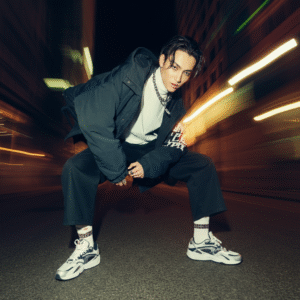
3. Action Poses
A fashion shoot gains vitality from action postures. Consider these as time-stamped moments. They are ideal for showcasing dynamic aspects such as sporting gear or flowing dresses.
Key Tips for Action Poses
- Movement: Jump, dance, or take a step forward—but keep your actions deliberate to avoid blurry outcomes.
- Focal Points: Stay aware of intriguing garment details you can highlight in motion, such as ruffled sleeves or sequined skirts.
- Expression: Match the joy or intensity of the movement with your facial expression.
4. High-Fashion Poses
The angles of these positions tend to be strong and exaggerated. They are the focal point of couture displays and fashion magazines. Dramatic storytelling and distinctive shapes are major components of high fashion poses.
Key Tips for High-Fashion Poses:
- Experimentation: Don’t shy away from imposing your torso, exaggerated arm lines, or tilts of the head.
- Play with Negative Space: Leave intentional gaps between body parts to emphasize the shape of your outfit.
- Facial Engagement: Confidence is crucial–your eyes should convey pride in wearing the clothing.
5. The Over-the-Shoulder Look
A hint of mystery is added by fashion poses in which the model looks back over their shoulder. This technique is ideal for beauty or bridal shoots because it lets you draw attention to particular aspects.
Pro Tips:
- Relax the shoulders to avoid stiffness.
- Avoid over-rotating the head; keep the gaze subtle and minimal.
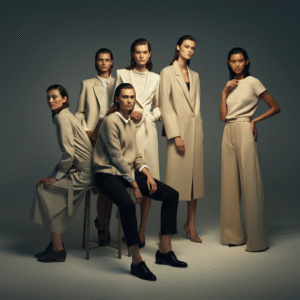
How to Master the Art of Posing
Posing is more than merely mimicking magazine images. It involves modifying facial expressions, using props, and interpreting body language. We’ve listed essential guidelines to help you improve your posing skills below.
1. Understand the Language of Body Movement
Posing is a dynamic art of engaging the observer; it’s not static. Practice switching between stances with ease. To make your positions appear less artificial, picture yourself moving.
Practice Tip:
Mirror practice is invaluable. Identify and record movements that emphasize your natural strengths.
2. Leverage Props
By adding visual appeal and a narrative element, props can elevate your poses. Props, such as a textured chair, scarf, or clutch purse, provide variety to your photographs.
Examples of Prop Interaction:
- Twisting a hatband or adjusting sunglasses.
- Leaning casually on a prop, such as a vintage bicycle or a modern sculpture.
3. Harmonize Facial Expressions
Always make sure your expression goes well with your position and the overall mood of the picture. In fashion photography, smizing—or smiling with your eyes—is a particularly effective technique.
Facial Expression Tips:
- Practice looking serious, playful, or fierce in front of a mirror.
- Use slight nuances, like a raised brow or parted lips, to convey emotions authentically.
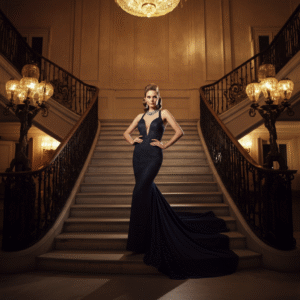
Beginner’s Guide to Posing
Posing may first feel uncomfortable for novices. Take these doable measures to start small and increase your confidence.
1. Study Creative References
Pinterest, Instagram, and fashion blogs are great places to find original poses. Make a note of the ones you like and attempt to recreate them first.
2. Use Your Smartphone and Practice
Finding your flattering angles might be aided by recording yourself as you experiment with various stances. All you have to do is set up your smartphone and try different positions.
3. Learn the Power of Tilt
Small adjustments to hips, shoulders, and head angles have a significant impact. You can lengthen your silhouette by simply raising up onto your toes.
4. Critique Through Comparisons
To determine which stance works best, take many pictures of each one. You will become an expert at posing if you pay attention to these subtleties.
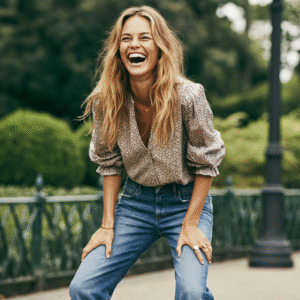
Storytelling in Fashion Poses
Great clothes alone won’t make a photo shoot effective; emotional resonance and narrative are also necessary. Every position should support the visual narrative of the story.
While a dramatic story uses crisp, angular positions, a lighthearted story may use flowing, happy gestures. Every gesture’s specifics, such as how hands make contact with objects or how feet attach to the ground, can provide viewers with a more profound understanding of the story.
Storytelling is also a key component of branding. Certain positions are used by brands to convey a certain image or persuade customers of their desired lifestyle.
Example of Storytelling Poses:
- Joyful Campaigns: Extended arms toward the sky or exaggerated movements showing laughter.
- Luxury Campaigns: Understated elegance, minimal movement but high focus on posture and sophistication.
Current Trends in Fashion Poses (2025)
Fashion poses evolve in tandem with cultural shifts and technological innovations. For 2025, the focus is on environmentally conscious storytelling and raw emotional authenticity.
Hot Trends:
- Natural Frames: Models leaning against windows or surrounded by lush greenery.
- Candid Shots: Mid-action poses that appear spontaneous rather than staged.
- Retro Revival: Nostalgic poses inspired by 90s or early 2000s fashion photography.
- Tech-Inspired Poses: Creative use of AR filters or VR environments merged with dramatic body postures.
Wrap-Up and Next Steps
Success in modeling and photography requires striking fashionable poses. You can improve your photogenic appeal and the way your photographs convey meaning and engage viewers by learning a variety of stances.
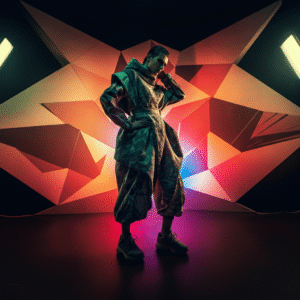
Actionable Takeaways:
- Start practicing foundational poses today; standing and sitting poses offer endless variations.
- Record yourself to identify your natural angles and refine them over time.
- Follow trends, but make sure your personal brand and aura are reflected in your poses.
Use these tips to shape your skills and confidently shine, whether you’re in front of a DSLR camera or someone scrolling Instagram!





Leave a Reply